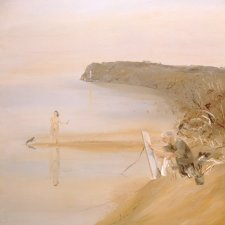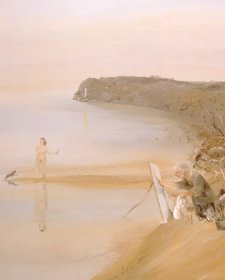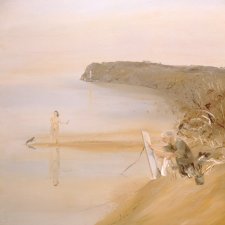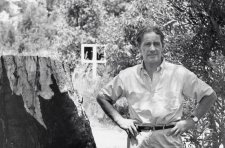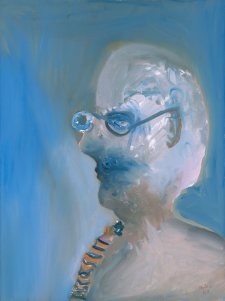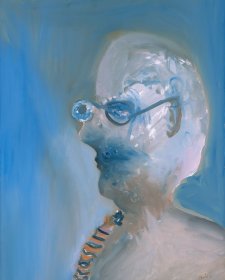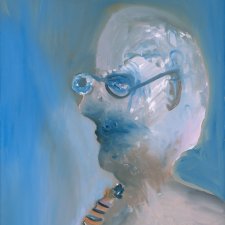It’s a bit difficult to put it into words but I think what painters try to get at, or what I try to get at anyway, is that a painting’s an extension of yourself, it’s a kind of growth thing. If you grew another arm, you know, you hope it would look like a painting, or anyway, put it this way: a painting sometimes feels like an extension of yourself.
And I believe, in the past, that Chinese artists working some of their bamboo paintings, would put their fingers right into the brush, into bristles of the brush, and work there in order to feel this kind of electric thing flowing through them; that they want to get as close as possible to the ink. I think it’s something to do with growth, that this is one of the things that’s at you.
And … the other obsession, or compulsion in a way, is that the growth shall be something that other people can recognise, that it’s got a meaning for them. And I think this is the kind of rather knife-edge thing that painters are on; that they want to produce something out of themselves but they want it to be something that other people will recognise. I mean, it’s almost as if, I suppose – although one hesitates to use the image – but if you produced a child and nobody liked it or recognised it or anything else. You not only produce it, but you want it to be part of the common experience and to be recognised as such.
And I think in Australia now … is probably this rather wonderful position where all this is coming together. You don’t produce things out of your own compulsions to find that they fall on stony ground. It’s now beginning that you’re getting a response, and this of course enables you to produce more and more and make it richer and richer.
And it seems to me that young painters now, here in Australia, are just at the moment when they can kind of have full confidence that whatever they produce honestly will meet with the recognition, and from this moment on you get back to what you got in Italy and Spain and all these things; you get the community and the art matching each other.
